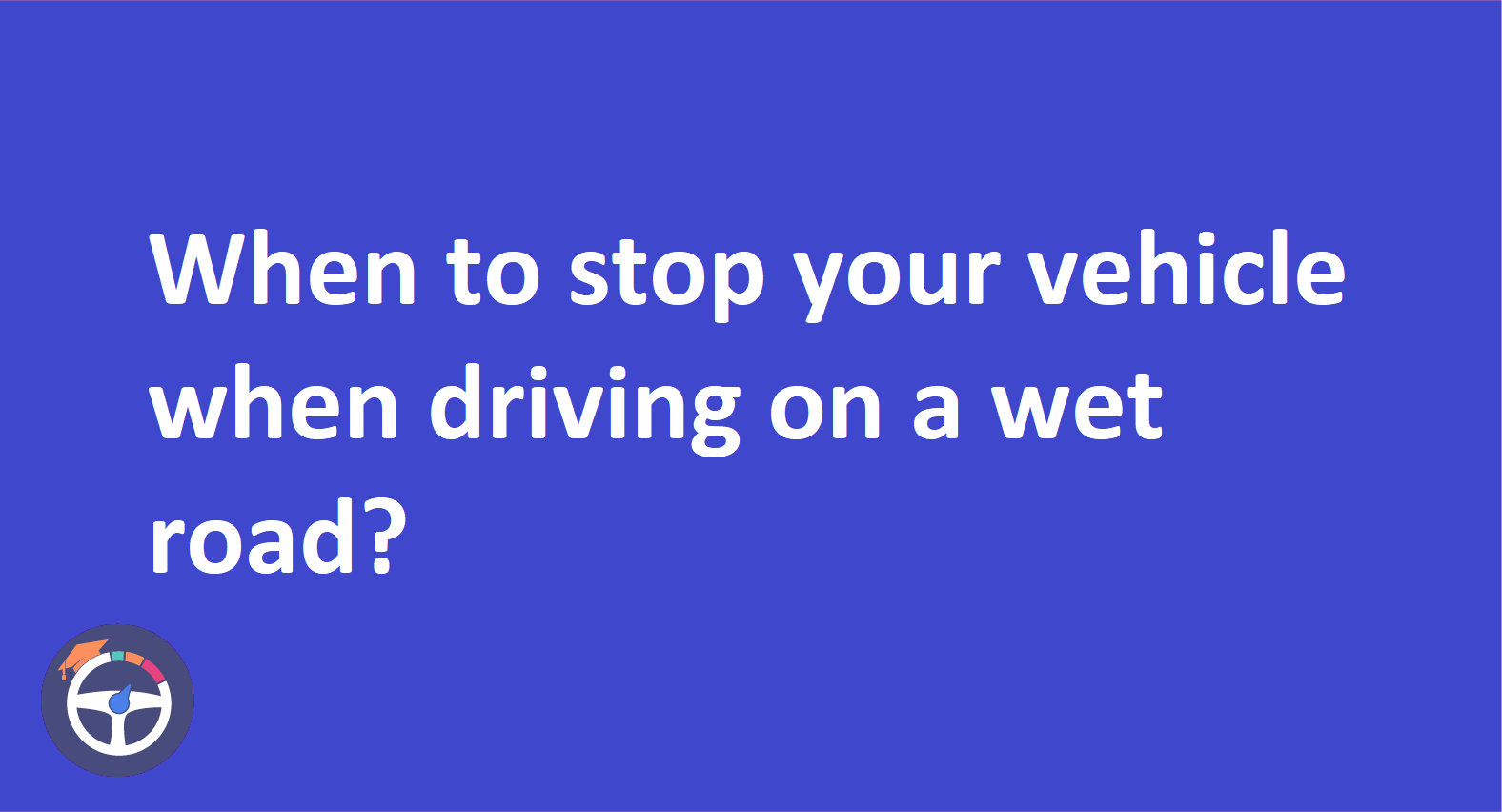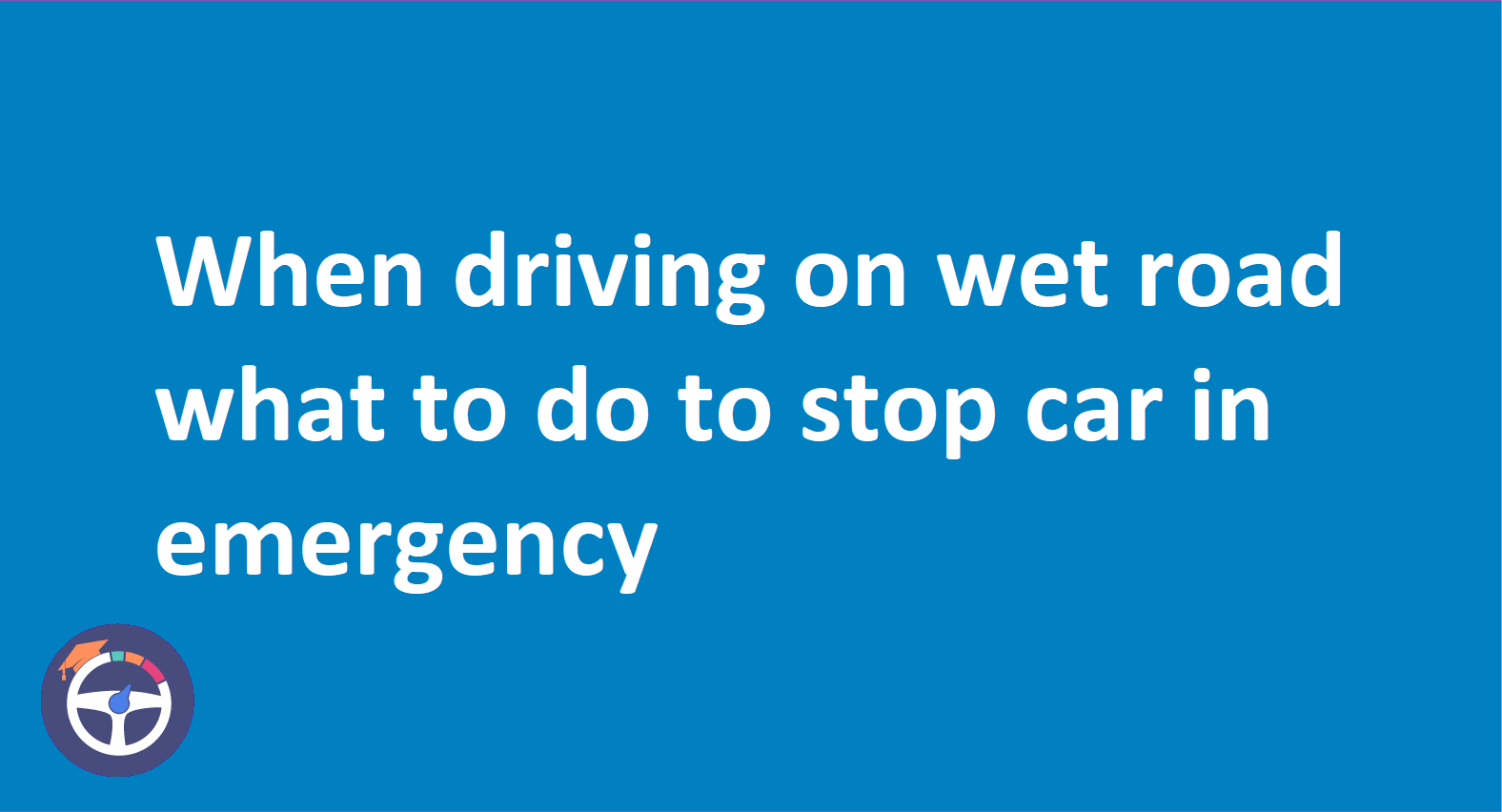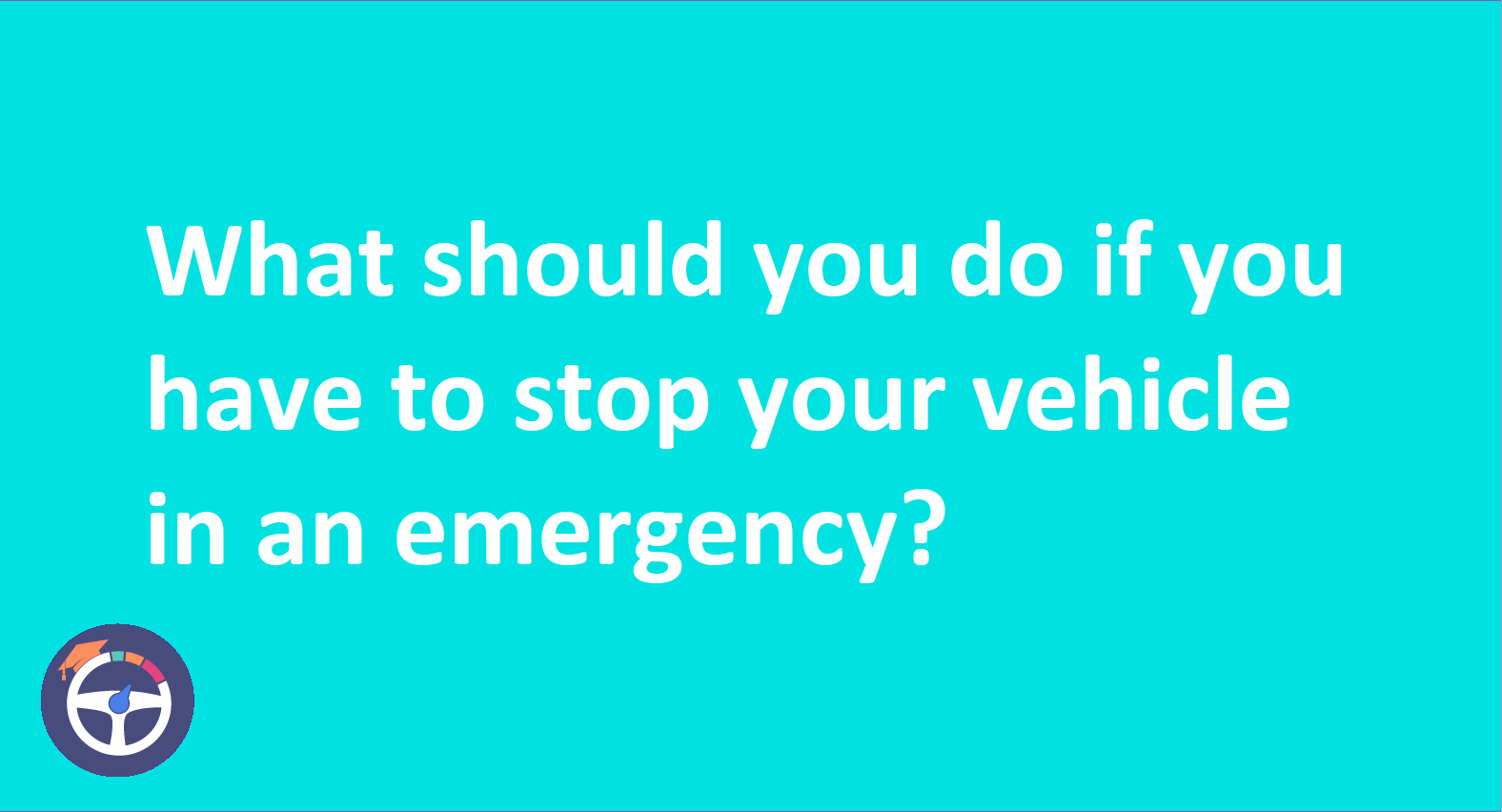When to stop your vehicle when driving on a wet road?
You should stop your vehicle on a wet road when you encounter a hazard, such as another vehicle or pedestrian, and your stopping distance increases due to reduced grip. Always begin braking earlier than usual to ensure a safe stop, and be cautious of any skidding.

Contents
- When to stop your vehicle when driving on a wet road?
- When to Stop in an Emergency on Wet Roads
- Additional Tips:
It takes extra concentration and caution to drive on wet roads. Your car's handling and braking performance can be greatly affected by slick surfaces. Here’s a brief guide to help you safely navigate an emergency stop on wet roads in case you find yourself in an emergency situation that requires you to stop right away.
You're driving on a wet road, when must you stop your vehicle? Well, your safety is the most important thing. There are a few circumstances in which an instant stop may be required.
1. Unexpected dangers: See an animal darting across the road a stopped car up ahead. Firmly brake to prevent a collision.
2. Medical emergency: Stop as soon as you can at a safe place if you or a passenger needs medical attention.
3. Issues with the vehicle: Is there smoke coming from the engine? Are there any odd noises? Stop in a safe location and evaluate the situation.
When to Stop in an Emergency on Wet Roads
It can be difficult to stop suddenly on wet roads. To keep in mind follow these important steps:
1. Act Quickly: It’s important to act quickly without losing your cool but don’t panic. Evaluate the circumstances and respond with grace and speed.
2. Preserve Control: Make sure both hands are securely gripping the steering wheel. Your car may skid and become uncontrollable if you apply the brakes suddenly.
3. Pump the Brakes: Don’t apply continuous pressure when pumping the brakes. Instead to keep the wheels from losing traction on the road continuously apply the brakes. We refer to this method as threshold braking.
4. Increase Distance: In order to avoid collisions with oncoming traffic it is important to increase your following distance when driving on wet roads. In the event of an emergency, you will have more time to respond and stop safely.
5. ABS (Anti-Lock Brakes): When you apply the brakes feel the ABS pedal pulse. Don’t back down—ABS keeps steering control and helps avoid wheel lockup when applying emergency brakes.
Additional Tips:
1. Find a safe place to stop if at all possible attempt to do so on a level area or paved shoulder. Steer clear of sudden turns and uneven surfaces when stopping.
2. Turn on your hazard lights to let other drivers know that you are in a dangerous situation.
3. After coming to a stop apply the parking brake and evaluate the circumstances. If assistance is required call for help.
Keep in mind: Extra caution is required on wet roads. Safe driving in rainy conditions requires paying attention keeping a safe following distance and using the right braking techniques. To brush up on your skills think about enrolling in a defensive driving course if you have any questions about any aspect of emergency stopping.


